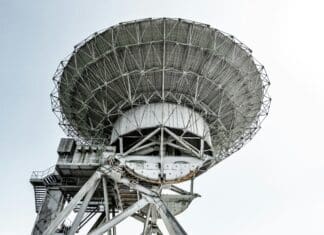This post is also available in:
 עברית (Hebrew)
עברית (Hebrew)
BAE Systems, a UK-based aerospace and defense company, has successfully conducted a new series of test flights of its solar-powered aircraft, the PHASA-35. This high-altitude, long-endurance Uncrewed Aerial System (UAS) is designed to function as a High-Altitude Pseudo-Satellite (HAPS), providing surveillance and reconnaissance capabilities above traditional air traffic and weather conditions.
The press release explains that the latest test flights represent a significant advancement in the development of the PHASA-35, showcasing its ability to launch, fly, land, and be reconfigured for subsequent flights in a very short time. According to Bob Davidson, CEO of BAE Systems’ Prismatic division, the trials are a “real moment of pride” for the team, as they push the boundaries of what this innovative aircraft can achieve.
During a recent flight at Spaceport America in New Mexico, the PHASA-35 flew for 24 hours, reaching an altitude of over 66,000 feet, well into the stratosphere. The aircraft demonstrated its durability by landing in a serviceable condition, ready for a relaunch just two days later. This successful trial also featured an upgraded payload, with an active intelligence, surveillance, and reconnaissance (ISR) sensor—specifically a software-defined radio developed by BAE’s Digital Intelligence business—carrying more than twice the weight of the previous payload.
The PHASA-35 features a 35-meter wingspan, and BAE Systems has made significant upgrades to the aircraft. The new iteration of the PHASA-35 includes over twice the solar power generation and storage capacity, allowing it to support even longer and more complex stratospheric missions starting in 2025.
The data from these trials will help BAE refine the aircraft’s capabilities and prepare it for operational use, with a target launch date of 2026. The PHASA-35 is poised to play a crucial role in the future of surveillance, offering extended, persistent coverage.


























